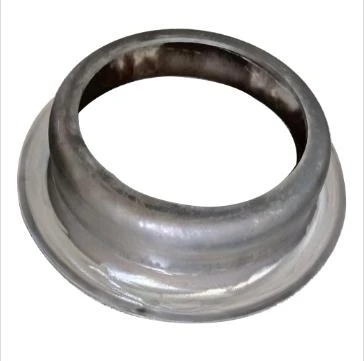Nov . 25, 2024 00:16 Back to list
Exploring the Differences Between Gray and Ductile Iron Foundries in Metal Casting
Gray and Ductile Iron Foundries An Overview
Gray and ductile iron foundries play a vital role in the manufacturing sector, providing essential components that serve a wide array of industries, including automotive, aerospace, construction, and machinery. These foundries are specialized facilities dedicated to the melting, casting, and processing of iron alloys, primarily focusing on gray iron and ductile iron due to their advantageous physical and mechanical properties.
Understanding Gray and Ductile Iron
Gray iron is characterized by its graphite structure, which is flake-like and gives the material its distinct gray color. It is known for its excellent castability, good machinability, and moderate strength. Due to these properties, gray iron is commonly used in engine blocks, cylinder heads, and various automotive components. Its ability to absorb vibrations also makes it an ideal choice for machine tool bases and other applications that require stability and precision.
Ductile iron, also known as nodular or spheroidal graphite iron, is an alloy that has been treated to develop a spherical graphite form. This modification enhances its ductility, impact resistance, and tensile strength, making it similar in performance to steel. Ductile iron is particularly valued in applications that face dynamic loads and where strength and resilience are paramount, such as in pipes, gears, and heavy machinery components.
The Foundry Process
The process of producing gray and ductile iron involves several crucial steps, beginning with the melting of raw iron in induction furnaces or cupola furnaces. The iron is refined and alloyed with various elements, such as silicon, manganese, and magnesium, to tailor its properties to specific applications.
Once the desired composition is achieved, the molten iron is poured into molds to create the desired shapes. This step is followed by cooling, where the iron solidifies and takes the form of the mold. After solidification, castings undergo various finishing processes, including machining, heat treatment, and surface finishing, to meet stringent quality standards and tolerances.
gray and ductile iron foundries

Quality Control and Testing
Quality control is a critical aspect of operations in gray and ductile iron foundries. Foundries employ various testing methods to ensure that the final products meet industry specifications. This includes assessing the chemical composition of the metal, evaluating mechanical properties through tensile testing, and conducting Non-Destructive Testing (NDT) methods, like ultrasonic testing, to detect potential defects.
Moreover, foundries often adhere to international standards, such as ASTM (American Society for Testing and Materials) and ISO certifications, to maintain consistency and quality in their output. Continuous monitoring throughout the manufacturing process helps to catch any abnormalities early on, ensuring that only the best products reach customers.
Environmental Considerations
As the foundry industry evolves, so too does its approach to environmental sustainability. Many foundries are implementing practices to reduce their carbon footprint, such as recycling scrap metal and optimizing energy use in their operations. Additionally, investment in new technologies, including electric furnaces and cleaner casting processes, helps to mitigate emissions and conserve natural resources.
Furthermore, foundries are increasingly engaging in lifecycle assessments to measure their environmental impact from raw material extraction to end-of-life disposal. By adopting more sustainable practices, gray and ductile iron foundries not only ensure compliance with regulations but also align with a growing demand for environmentally responsible manufacturing.
Conclusion
Gray and ductile iron foundries are crucial players in the engineering and manufacturing landscape. Through advanced techniques and a focus on quality, these foundries produce a wide range of critical components that underpin modern society's infrastructure and technology. As they continue to innovate and prioritize sustainability, their contributions will be significant in meeting the demands of a rapidly changing world while maintaining the high standards of quality and performance that industries rely upon.
-
OEM Cast Silicon Aluminum Alloy Heat Exchanger | Custom & High Performance
NewsAug.25,2025
-
Centrifugally Cast Iron Water Main Pipe | Ductile Iron Solutions
NewsAug.24,2025
-
Durable Cast Steel Concrete Pipe Mold Bottom Rings & Base Trays
NewsAug.23,2025
-
Centrifugally Cast Iron Water Main Pipe for Reliable Mains
NewsAug.22,2025
-
Durable Centrifugally Cast Iron Water Main Pipe
NewsAug.11,2025
-
Centrifugally Cast Iron Water Main Pipes for Reliability
NewsAug.10,2025


